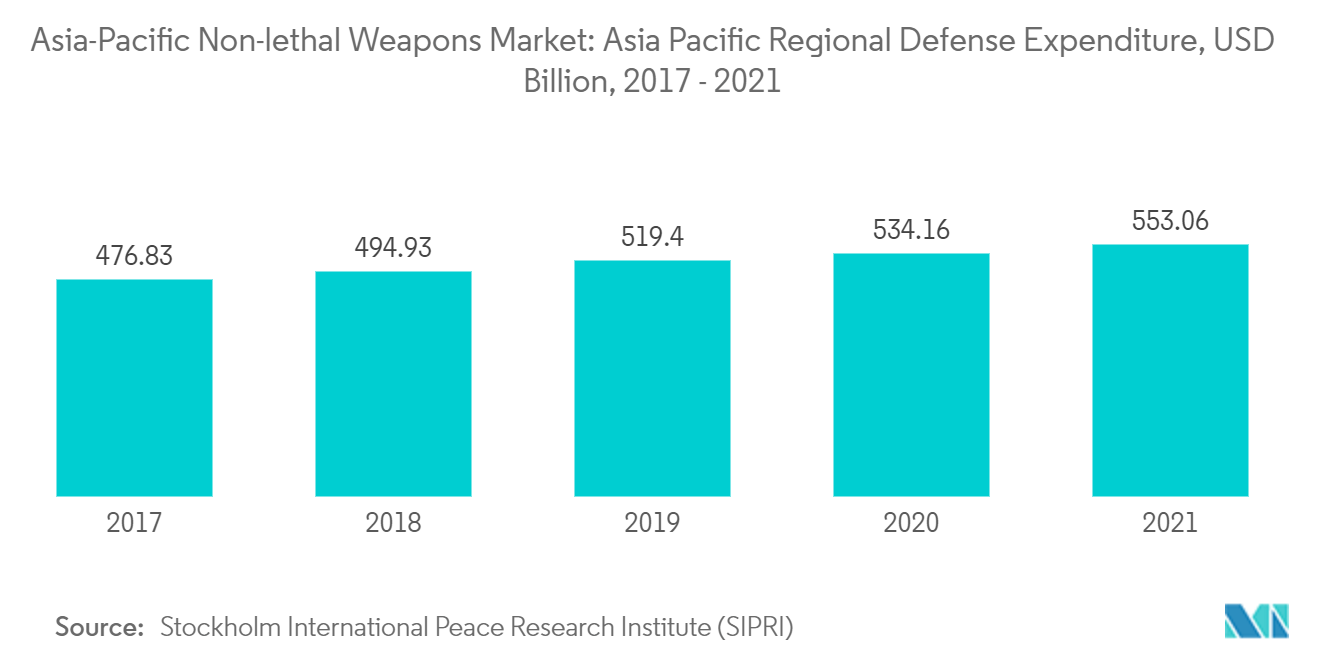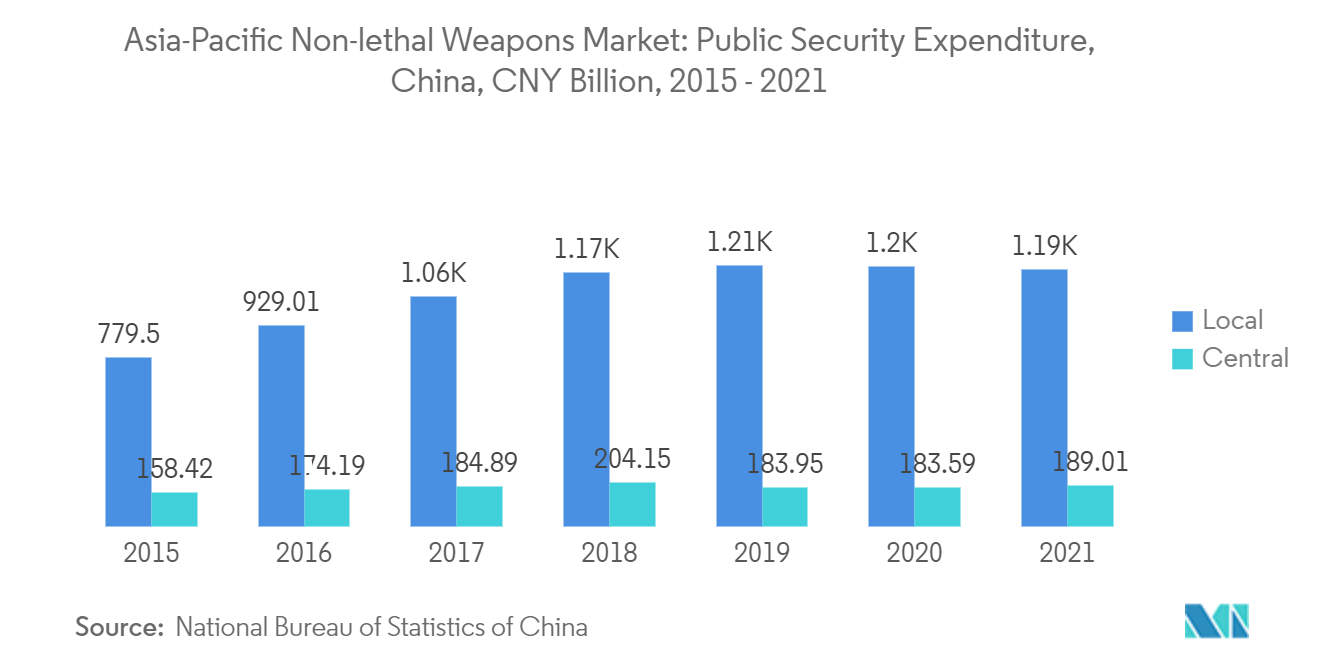Market Trends of Asia-Pacific Non-lethal Weapons Industry
Ammunition Segment is Projected to Grow at a High Pace
- The Asia-Pacific non-lethal weapons market is primarily dominated by the ammunition segment, which is expected to continue its dominance in the coming years. One of the primary drivers of this growth is the increasing instances of civilian unrest in the region, which has encouraged law enforcement agencies and the military to procure non-lethal weapons to ensure public safety.
- Moreover, the development of emerging R&D technologies is likely to bolster the development of new non-lethal ammunition, which may further propel the growth of the market. Different types of non-lethal ammunition, such as rubber bullets, wax bullets, plastic bullets, bean bag rounds, and sponge grenades, are used for short-range practice, animal control, and riot control.
- Recent advances in less-lethal technology offer the promise of more effective control over resistive suspects with fewer serious injuries, which may also drive the demand for non-lethal ammunition. For instance, in August 2021, Thai Police used rubber bullets, water cannons, and tear gas against pro-democracy protesters in Bangkok at a rally outside a military barracks housing the prime minister's residence.
- Moreover, governments permit the use of advanced non-lethal weapons in case of emergencies. Hence, the growing requirement for crowd-control weapons may further propel the growth of the market during the forecast period.

China to Dominate the Market During the Forecast Period
- China's dominance in the Asia-Pacific non-lethal weapons market is primarily attributed to the occasional riots and civil unrest, including protests related to labor, environmental, and educational issues in Eastern China's cities. As a result, the country's law enforcement has increasingly resorted to non-lethal ammunition, which collectively has had a positive impact on the market's growth. Furthermore, most police officers in China carry less-lethal weapons like tasers, batons, and mace spray, which are less harmful than traditional firearms. This trend is expected to continue as assaults on law enforcement agencies in the country increase, prompting the government to develop new non-lethal weaponry.
- The rising military spending in China, driven by the country's increasing GDP over the past 15 years, is anticipated to remain the primary factor driving the non-lethal weapons market during the forecast period. This increase in military spending has also led to a growing demand for both lethal and non-lethal weapons.
- The occurrence of riots and civil unrest in Eastern China and Hong Kong has also contributed to the market's growth, with police forces in these cities often resorting to non-lethal ammunition such as plastic and rubber bullets and teargas to control the crowd. For example, during the Hong Kong protests in May 2020, police forces in China used tear gas to disperse the crowd protesting against Beijing's national security law.
- The use of non-lethal weapons across the country is encouraging the development of advanced non-lethal weapons, such as the non-lethal microwave radar weapon that China began developing in September 2019. This weapon shoots microwaves at targets, leaving them in pain under the skin. The development of such advanced non-lethal weapons is anticipated to drive the market further in China during the forecast period.

